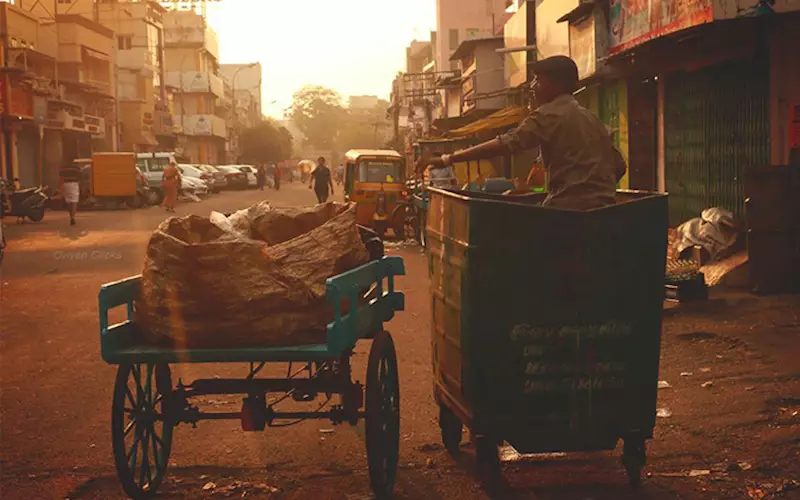Green campaign has to include safai kamgars
Ramu Ramanathan, editor, WhatPackaging?, says "Things will improve only if we learn to treat our people better."
24 Oct 2018 | By Ramu Ramanathan
These days, everyone is maximising sustainability. There are keynote lectures and seminars about how to identify a firm's green certification and audit emissions, and cope with bans. Some firms do it for green reasons, others notch up CSR points. But there is no roadmap about sustainability and what constitutes green practices in a country such as ours! Even today, there is little information on how a print-packaging business could tap into green technologies or take up sustainable practices. Much of what is out there is theoretical than the practical nuts-and-bolts a business needs to harness.
Which is why when one comes across Indian firms like Bengaluru-based Brilliant, there is a relief. The firm measures carbon footprint, monitors rubbish, treats and recycles water. But more importantly, Brilliant spends money on a plan.
We will publish a Brilliant case-study in the next issue of PrintWeek India because we need many more Brilliant examples. More so because of what is happening in China – the world’s biggest scrap importer – has stopped accepting recycled plastic and unsorted scrap paper from abroad, plus it has curbed imports of cardboard. In real terms this calculates into USD 24 billion worth of recycled materials. This is what China used to import; and is a quarter of the total traded globally. On 31 December 2017, more than half of the world’s used plastic, paper and cardboard—32m tonnes per annum — was heading to China.
China recycled 85% of the 7m tonnes of plastic it imported in 2016 (the rest went to landfills or was incinerated). Today Indian firms are fearful about the future. What happens to waste?
Will our industry wake up to the challenge, I asked a waste management expert. He said, there are three aspects to it. One is government legislation, since we are a country which responds "only" to strict rules and regulations. Two is a process mechanism and proper audits.
And third is our people. The expert said, "Things will genuinely improve only if we learn to treat our people, better." He shared a report about conservancy workers in India's richest city: Mumbai. 40,000 conservancy workers are employed by the BMC. They collect garbage, clean gutters and work in the dumping grounds.
I attended a talk by Padmashri winner and photo journalist Sudharak Olwe who has documented this through black-and-white photographs that shame us about how we live in a country where we have delegated the collection of our s**t to the other. Olwe says, "The safai kamgar appears at 5 am to collect our garbage, sweep our streets, clean our gutters, enter the sewage canals, inhale toxic gases, load and unload the garbage trucks, and offload more than 12,000 tonnes of ‘s**t’ on the dumping grounds. There are five dumping grounds on the eastern and western edges of Mumbai city and they are filled to capacity. None of the sites have a canteen or a room where the workers can change their clothes or sit during a break."
Olwe, whose photo essays have depicted this living hell, says, nothing has changed for these castes. The collection of garbage remains the responsibility of "a specific caste and a specific community". And even if you offer a lakh or two lakh as remuneration to a middle class person, the job of a safai kamgar will be spurned.
I wandered Mumbai's streets to understand this. I saw young boys enter a sewage after taking off their shirts and clothes, in their knickers, because they say they may not survive if they go in clothed. Sometimes the drainage lines are deep enough to accommodate a double-decker bus. After 90 minutes, when a worker comes out, he is shivering. The work requires no special skills, just a pair of arms and legs and the courage to descend into hell. There is no safety kit, no equipment, no support system.
During a lec-dem recently, Olwe shared heart wrenching images of workers raking out animal carcasses, food remains, steel wires, hospital waste, jagged pieces of wood-pipes, stone, broken glass and even blades – with a broom. And that's when Olwe's words resonate, "We boast that we possess the technology to leapfrog into digital India, but the same technology has not bettered the safety equipment of the safai kamgar. There has been no decree by scientists to modify the 2000 year old broom."
Solar panels and carbon emissions and sustainability audits are important, but till we value the life of each and every human being – and safai kamgar – our industry's green revolution will never take off.











 See All
See All